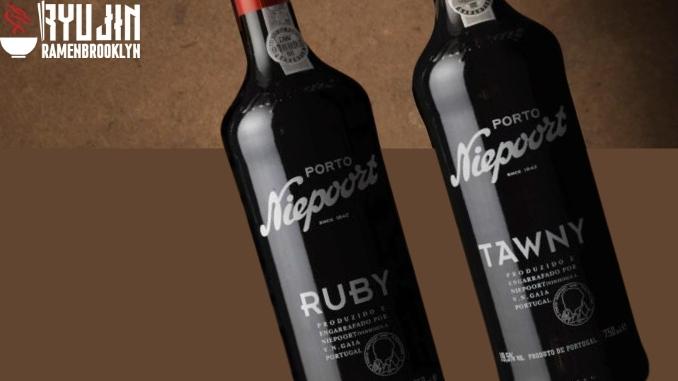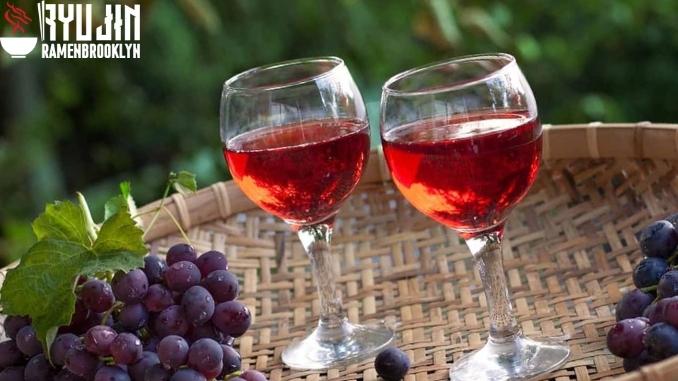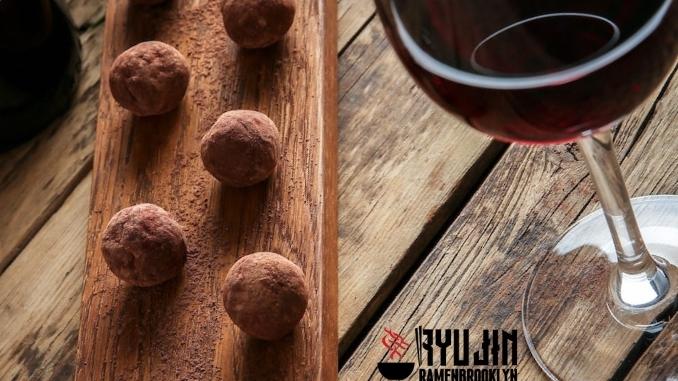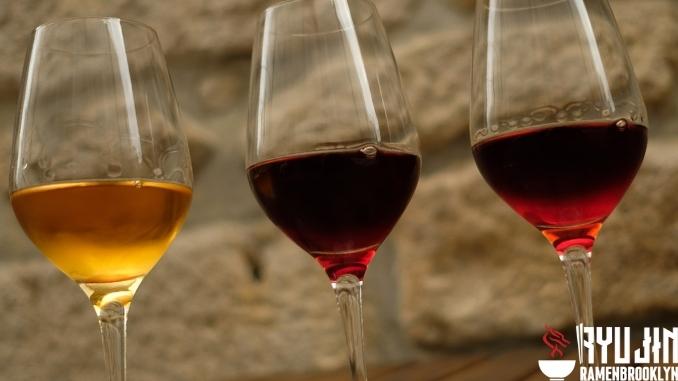Tawny vs Ruby Port
Port is a fortified wine that comes from Portugal. It’s made by adding a distilled spirit to red wine and can be either Tawny or ruby. What’s the difference: Tawny vs Ruby port? And what’s the best way to drink them?
Ruby port is a beautiful deep red wine that gets its color from being aged in contact with oak. Tawny Port is a lighter, brownish-red wine made by blending young and old wines. Some people say that Tawny ports are smoother than ruby ports.
In this blog post, we’ll compare and contrast Tawny vs Ruby Port so you can decide which is the right one for you. Keep reading for all you need to know about Tawny and ruby ports!
- What Is Tawny Port?
- Tawny vs Ruby Port: Differences and Similarities
- How To Choose The Right Wine
- Which Wine Is Better for Different Occasions?
- What Are Some Brands of Each Wine?
- FAQs
- Is There a Rose Version or Port Wine?
- Is Tawny Port Sweet?
- Is Ruby Port Dry?
- What Can You Mix With Ruby Port?
- Is Tawny Port Good for Cooking?
- Do You Have Any Other Tips for Cooking With Tawny or Ruby Port?
- What Does “Do You Know The Bishop of Norwich” Mean?
- How Long Does The Port Last When It Is Unopened?
- How Long Does The Port Last Once It Is Opened?
- Do You Have To Decant Port?
- What Glass Do I Serve Port In?
- Do You Have Any Other Tips for Choosing Between Tawny and Ruby Port?
- Is Vintage Port Ruby or Tawny?
- Can I Substitute Tawny Port for Ruby Port?
- Conclusion
What Is Tawny Port?
To start the topic of the article, we will provide the basics of two wines, Tawny Port vs Ruby Port. You can read on to get an overview of these two wines before going into their differences.
Due to its aging process, Tawny port is often light brown or Tawny, with old grapes mixed into new ones before blending for a smoother taste than ruby red. This wine has flavors of nuts and caramel alongside dried fruit making it sweeter than most types that are too intense, causing digestion problems if consumed undiluted but great paired alongside dessert!
Ribeiro Provedor does not believe there’s just one way(port)to do things- therefore, each vintage will be creatively crafted differently depending on what they feel best showcases their terroir – whether sweet (slightly below 50g/L), Tawny (50-70g/L) or even colheita (over 70g/L).
Tawny ports are known for their smooth, nutty flavor.
All Characteristics of Tawny Port
– Tawny or light brown color
– made by blending young and old wines
– typically less sweet than other types of port
– flavors of nuts, caramel, and dried fruit.
How Is Tawny Port Made?
Tawny Port is made from a blend of both young and old wines. The grapes are fermented for a short period, and then the fermentation is stopped by adding a distilled grape spirit. This wine is typically aged in oak barrels for 10 years or more.
The Tawny color is due to the wine’s exposure to oxygen as it ages in the barrel. This process also gives Tawny port its smooth, nutty flavor.
How To Drink Tawny Port
Tawny port is best served at room temperature or slightly chilled. It can be enjoyed on its own or paired with desserts such as chocolate cake or crème brulée.
The Tawny port can also be used in cocktails. Try a Tawny port old-fashioned or a Tawny negroni.
If you’re looking for a Tawny port to drink now, we recommend the J.P. Chenet Tawny Port. This wine is fruit-forward with flavors of caramel and dried fruits. It’s perfect for sipping on its own or pairing with dessert.
The History of Tawny Port
The Tawny port has been made in the Douro Valley of Portugal for centuries. The first Tawny port was produced in 1679 by a British merchant named John Blandy.
Blandy’s Tawny port became very popular, and soon other producers in the Douro Valley began making their tawnies. Today, Tawny Port is one of the most popular types of port.
Styles of Tawny Port
There are three main styles of Tawny port:
– Single-year Tawny: This port is made from a blend of wines that are all the same age. Single-year tawnies are typically aged for 10 years or more.
– Aged Tawny: This port is made from a blend of aged wines for different amounts of time. Aged tawnies can be aged for 20 years or more.
– Colheita Tawny: This port is made from a single vintage of wine. Colheita tawnies are typically aged for 7 years or more.
Tawny ports can also be labeled with their age, such as 10-year-old Tawny or 20-year-old Tawny.
What Is Ruby Port?
Ruby port is a type of port wine typically red or purple. It is made from red grapes fermented for a short period and then fortified with a distilled grape spirit. Ruby port is typically aged for 3 to 5 years in oak barrels.
Ruby port is the most common type of port, and it is the least sweet of all the ports. It is typically made from several different grape varieties, including Touriga Nacional, Tinta Cao, and Tinta Roriz.
Ruby port has a fruity flavor with hints of chocolate and spice. It is typically sweeter than Tawny port and can be enjoyed on its own or paired with desserts such as chocolate cake or crème brulée.
All Characteristics of Ruby Port
– Deep red or purple color
– Made from red grapes
– Typically less sweet than other types of port
– Flavors of fruit, chocolate, and spice.
How Is Ruby Port Made?
Ruby port is made from red grapes fermented for a short period and then fortified with a distilled grape spirit. The fermentation is stopped early, which leaves some residual sugar in the wine. This wine is typically aged for 3 to 5 years in oak barrels.
The ruby color is due to the wine’s exposure to oxygen as it ages in the barrel. This process also gives ruby port its fruity flavor.
How To Drink Ruby Port
Ruby port is a great choice for any occasion. It’s best enjoyed at room temperature or slightly chilled and can be paired with desserts such as chocolate cake or crème brulée to make an unforgettable dessert cocktail!
You could also mix some into your favorite coffee drink- the only thing better than one glass of this sweet red liquid? A bunch more glasses filled up on Ruby Port Old Fashioned & Negroni alike, so you don’t have too much waiting around before drinking them all yourself (you’re welcome).
If you want to drink something that’s not too sweet, we recommend the Taylor Fladgate First Estate Reserve Ruby Port. This wine has aromas of blackberry and plum with flavors such as chocolate or spice. It is perfect for sipping by itself or paired with dessert!
The History of Ruby Port
In 1679, a British merchant named John Blandy made the first Ruby Port in Portugal. He found success with his wine, and soon other producers from around that area began making their rubies!
Today you can find these amazing drinks all over the world- be sure to try some of Portugal’s very own “ruby,”–a type of delicious red fruit known for its sweet flavor most commonly grown on vines that produce large crops annually celebrating 500 years since King Philips War (1501)!
Styles of Ruby Port
Ruby ports are delicious and offer a wonderful opportunity to enjoy two of Portugal’s most famous exports: wine (reserve) or Portugal(vintage). There is also an excellent range in alcohol content – from 10-year-olds at 40%volumes up to 20%, which can contain twice the amount of colostrums, etcetera!
Tawny vs Ruby Port: Differences and Similarities
Tasting
The first factor that is often mentioned when comparing the differences between the two wines is its taste, including Tawny Port vs Ruby Port. Tawny ports’ nutty and spicy taste is often complemented by notes such as cinnamon, cloves, or even pepper. In a younger vintage, the flavor could also include raisins that have been dried into figs, depending on how long they’ve aged before being bottled! The longer these wines contact their oak barrel, the more vanilla you’ll find yourself detecting, too–which brings out those rich Cordoba oaks at play here.
This is why it’s important to age your Ruby port in stainless steel vats and not oak casks. The reason for this? Oxidized wines have an unpleasant taste, which you don’t want when drinking something as prestigious or costly-depending on what kind of drinker you are!
Winemaking
Tawny is made from red grapes fermented for a longer period and then fortified with a distilled grape spirit. Tawny is aged for 10 years or more in oak barrels, while ruby port is aged for 3 to 5 years in oak barrels.
Alcohol Content
Tawny has an alcohol content of 20%, while ruby port has an alcohol content of 18%.
Origin
Tawny is from Portugal, while ruby port is from all over the world.
Price
Tawny is typically more expensive than ruby port because it is aged for a longer period. They are in the range of $20 to $100. Ruby ports are typically less expensive and range from $10 to $20.
Type of Bottle
Tawny is usually found in a bottle with a tap on the side, while ruby port is usually found in a standard wine bottle.
Storage
How you store wine is often very important, you are not always ready to drink it as soon as you buy it. Each wine has a different way of storing, both Tawny vs Ruby has their own temperature to preserve the most perfect. Tawny should be stored in a cool, dark place. The ideal temperature is between 55 and 59 degrees Fahrenheit. Ruby port can also be stored in a cool, dark place. However, the ideal temperature is between 45 and 50 degrees Fahrenheit.
How does serving temperature affect the flavor of each wine? Serving Tawny at room temperature allows the flavors to come through more prominently while serving ruby port chilled helps preserve the wine’s fruitiness.
Cellaring
Tawny can be cellared for up to 40 years. Ruby port can be cellared for up to 20 years.
Servings per bottle
Tawny has 6 to 8 servings per bottle, while ruby port has 4 to 6 servings per bottle.
Body
Tawny is a full-bodied wine, while ruby port is a medium to full-bodied wine.
What is the body? The body is the characteristics of a wine that are determined by the amount of alcohol and tannins present. The body can be light, medium, or full-bodied.
Tannins
Tawny has high tannins, while ruby port has medium tannins. This is because Tawny is made with red grapes that have a longer fermentation time, allowing more tannins to be extracted.
What are tannins? Tannins are a natural compound found in grape skins, seeds, and stems. They contribute to the astringency, bitterness, and longevity of the wine. Tannins can come from oak barrels if the wine is aged in them.
Climate
The climate in Portugal is perfect for Tawny because the hot days and cool nights help preserve the acidity in the grapes. The climate for ruby port can vary depending on where it is produced.
How does the climate affect the wine? The climate has a huge impact on the flavor of the wine. Grapes grown in warm climates tend to have higher sugar levels, which results in a sweeter wine. Grapes grown in cool climates tend to have higher acidity levels, which results in a crisp, tart wine.
Health Benefits
Tawny and Ruby ports both have the potential for health benefits because they contain high antioxidants. These compounds help protect cells from damage, which is why these wines may reduce your risk of developing heart disease or cancer – two major chronic conditions that immensely affect people’s quality of life!
The tannin found within red grapes also provides significant nutritional value by contributing to coloring foods such as wine when consumed with them; this adds another plus side effect to tannic wines like Tawny and ruby ports!
In moderation, Tawny or ruby port can be part of a healthy diet as they offer many potential health benefits.
Food Pairings
Tawny is typically paired with desserts that are not too sweet, such as chocolate or tarts. Ruby port is typically paired with chocolate or fruit desserts.
Some recipes for Tawny:
-Tawny Apple Cake
-Tawny Port Chocolate Mousse
-Tawny Rhubarb Crumble
Some recipes for ruby:
-Ruby Grapefruit Cocktail
-Ruby Chocolate Cake
-Red Velvet Ruby Roulade
How To Choose The Right Wine
The Tawny vs Ruby Port debate has been around for a long time. Both wines have their unique flavor profiles, and each pairs well with different types of food.
When choosing between the two, it is important to consider what flavors you prefer and what kind of occasion you are drinking for. If you are looking for a wine to pair with a chocolate dessert, Tawny is better. If you are looking for a wine to drink on its own or with a fruit dessert, ruby is the better choice.
Which Wine Is Better for Different Occasions?
– A casual lunch: Tawny.
– A formal dinner: ruby.
– A romantic evening: Tawny.
– A night out with friends: ruby.
No matter what the occasion is, there is a Tawny or ruby port that will pair perfectly with it. The next time you are stuck on which wine to choose, remember the Tawny vs ruby port debate and decide what flavors you prefer and what type of occasion you are drinking for.
What Are Some Brands of Each Wine?
Some Tawny brands are:
– Warre
– Graham’s
– Fonseca
Top 10 popular Tawny ports:
– Warre’s Otima 10-Year-Old Tawny Port
– Fonseca Bin 27 Fine Ruby Port
– Graham’s Six Grapes Reserve Port
– Warre’s Warrior Reserve Port
– Fonseca Guimaraens Vintage Port
– Graham’s Crusted Port
– Warre’s LBV Port
– Fonseca Vintage Character Port
– Graham’s Vintage Port
Some ruby brands are:
– Sandeman
– Taylor Fladgate
– Churchill’s
Top 10 popular ruby ports:
– Sandeman Founders Reserve Porto
– Taylor Fladgate First Estate Reserve Ruby Port
– Churchill’s Special Reserve Porto
– Sandeman Royal Reserve Porto
– Taylor Fladgate Late Bottled Vintage Port
– Churchill’s LBV Port
– Sandeman 10 Year Old Tawny Port
– Taylor Fladgate Vintage Character Port
– Churchill’s Reserve Ruby Port
See more: What Wine To Pair With Lamb
FAQs
Is There a Rose Version or Port Wine?
To produce a rose port, winemakers have been experimenting with how they make their red wines. They fermented it in the same way as white ones. Still, They added some extra ingredients that gave them color and flavor notes from flowers like roses or violets before blending these for drinking delicious Portugal produces many different types of ports-both tawnies (stylishly aged)and rubies (youthful).
The latter two are gaining more popularity than ever, thanks largely to its recent boost among wine enthusiasts who enjoy “Young” tasting wine at peak condition rather than waiting until aging takes over.
Is Tawny Port Sweet?
Tawny port is not as sweet as ruby port, but it does have some residual sugar. The sweetness level will vary depending on the brand and age of the Tawny port.
Is Ruby Port Dry?
Ruby port is not as dry as a Tawny port, but it does have some residual sugar. The sweetness level will vary depending on the brand and age of the ruby port.
What Can You Mix With Ruby Port?
There are many things you can mix with ruby port, but some popular choices are:
– lemonade
– club soda
– cranberry juice
– orange juice
The New York Collins is a classic cocktail with rye whiskey and lemon juice. If you want to take it up a notch, try adding some Ruby port for extra flavor!
Is Tawny Port Good for Cooking?
Yes, Tawny port is a good choice for cooking because it adds a unique flavor to dishes. Tawny port can be used in sauces, stews, and braised dishes.
Do You Have Any Other Tips for Cooking With Tawny or Ruby Port?
When cooking with Tawny or ruby port, use a good quality wine. These wines are often used as ingredients in sauces and braised dishes, so it’s important to choose a wine that you would also enjoy drinking.
If you are using Tawny port in a recipe, you may want to add a little extra Tawny port to compensate for the difference in flavor.
What Does “Do You Know The Bishop of Norwich” Mean?
The custom of passing around the decanter at dinner parties dates back centuries. In 18th and 19th-century England, it was common for people to drink port after their meals, so it would be passed until someone asked if they knew Bishop of Norwich – who is often referred to as a “lovely man but sometimes forgets his duty.”
The answer should prompt them then do what needs to be done: Either hand over this precious liquid (which might include some jokes) OR let go immediately because there is no way to get away without being called out!
How Long Does The Port Last When It Is Unopened?
If stored properly, an unopened Tawny or ruby port bottle can last for many years. When stored in a cool, dark place, Tawny port will age gracefully and develop complex flavors over time. On the other hand, Ruby port is best consumed within a few years of purchase.
How Long Does The Port Last Once It Is Opened?
Once opened, Tawny and ruby ports will last for several weeks. To prevent the wine from oxidizing, recap the bottle tightly and store it in a cool, dark place. If you find that your port has started to turn brown or taste flat, it is probably past its peak and should be discarded.
Do You Have To Decant Port?
No, you do not have to decant Tawny or ruby port. However, if you are serving a Tawny port that is more than 10 years old, it is a good idea to decant the wine to remove any sediment that may have formed in the bottle. Ruby port does not need to be decanted before serving.
What Glass Do I Serve Port In?
The ideal glass for Tawny or ruby port is a balloon-shaped glass that will allow the wine to breathe. Any large red wine glass will do if you do not have a special port glass.
See More: how many glasses are in a bottle of wine?
Do You Have Any Other Tips for Choosing Between Tawny and Ruby Port?
If you are looking for a port to drink now, ruby port is the way. If you are looking for a port to age, Tawny port is better.
The Tawny port will develop complex flavors over time, whereas ruby port is best consumed within a few years of purchase.
Ultimately, the decision between Tawny and ruby port is a matter of personal preference. So, try them both and see which one you like best!
Is Vintage Port Ruby or Tawny?
Vintage Port is a type of Tawny port. Vintage ports are made from a year’s harvest of grapes and aged for at least two years in oak barrels before being bottled.
Tawny ports are typically lighter in color and have more delicate flavors than ruby ports. Vintage ports are usually more expensive than other Tawny ports because they are made from high-quality grapes and take longer to age.
If you’re looking for a special occasion port, a vintage port is away. But if you’re looking for a delicious Tawny port to drink now, any good quality Tawny port will do!
Can I Substitute Tawny Port for Ruby Port?
Yes, Tawny port can be used in place of ruby port in most recipes. The flavors of Tawny and ruby ports are similar, but Tawny port is typically lighter in color and has more delicate flavors.
If you are using Tawny port in a recipe that calls for ruby port, you may want to add a little extra Tawny port to compensate for the difference in flavor.
Conclusion
So, what’s the verdict? Should you choose Tawny vs Ruby Port for your next gathering? Well, it depends on what you’re looking for. Each type has a different taste and purpose, the important thing here is that you know how to use them appropriately.
If you want a fruity wine with a sweet taste, go for the Tawny. But if you prefer something more complex and earthier, try ruby port instead, regardless of whether you like one style more than another or want to mix things up for yourself and keep your brain guessing.
The next time you are looking for a bottle of port to bring to your dinner party or want to enjoy a quiet night in, make sure you know the difference between ruby and Tawny. With this knowledge, you can choose the right wine for the occasion and ensure that everyone enjoys its unique flavor profile. Now is the time to decide which wine you should choose to enjoy.
If you have any questions about this or other topics, you can ask us or visit our website to find more useful information.
Anthony Michelin (March 26, 1960) is the CEO of Ryujinramenbrooklyn.com – is an expert in finding specialized equipment to assist in the Bar & Kitchen sector. With over 40 years of focus on finding the simplest recipes on the most suitable cookware to create the most delicious meals, I believe it will help you.



